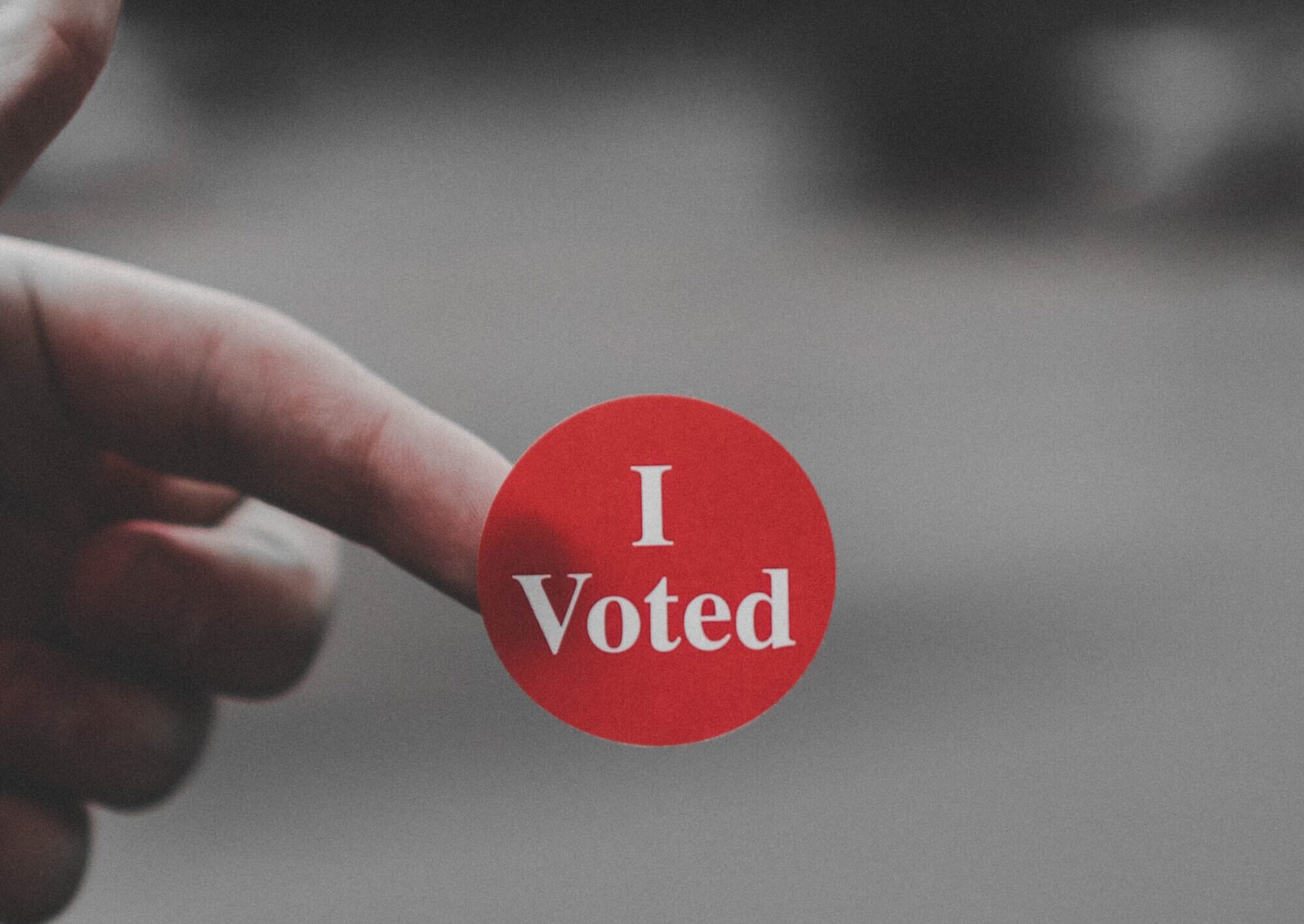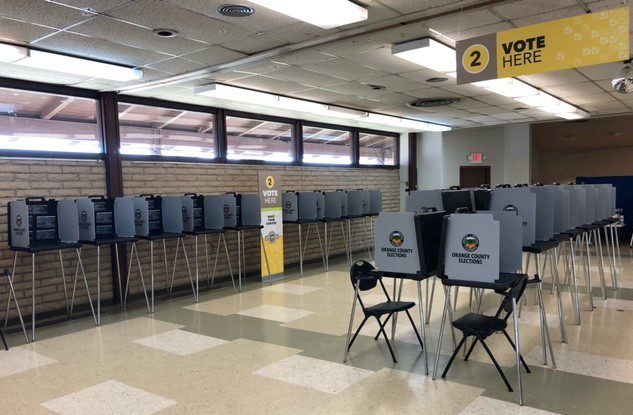Los Angeles
Measure A – Board of Supervisor’s power to remove elected sheriff
Los Angeles County voters will decide Tuesday whether the Board of Supervisors should be granted the authority to remove a publicly elected sheriff from office for cause.
The Board of Supervisors voted in August to place Measure A on the ballot, calling it an effort to ensure accountability in the county’s law- enforcement agency. But incumbent Sheriff Alex Villanueva has blasted the proposal as unconstitutional, calling it a blatant power grab by a board with which he has repeatedly clashed.
If Measure A is approved Tuesday, the board will have the power to remove a sheriff “for cause” with a four-fifths vote of the five-member panel.
“Cause” is defined as “a violation of any law related to the performance of their duties as sheriff; flagrant or repeated neglect of duties; a misappropriation of public funds or property; willful falsification of a relevant official statement or document; or obstruction of any investigation into the conduct of the sheriff by the Inspector General, Sheriff Civilian Oversight Commission, or any government agency with jurisdiction to conduct such an investigation.”
Although board members supporting the measure denied it was political in nature, the move was a clear response to its battles with Villanueva, who has accused board members of defunding his agency at the expense of public safety and has rebuffed subpoenas to appear before the county’s Civilian Oversight Commission.
Board Chair Holly Mitchell and Supervisor Hilda Solis introduced the motion calling for the ballot measure. Mitchell said during a July 12 meeting that the issue goes beyond Villanueva.
“The issue of sheriff accountability before us is both urgent and systemic, having impacted past generations of Angelenos, but also with important consequences for the future,” Mitchell said. “Unfortunately, the county has had long and troubling history with sheriff oversight and transparency.”
The motion by Mitchell and Solis referred to previous sheriffs Lee Baca, who was sentenced to federal prison on corruption charges, and Peter Pitchess, who “resisted any involvement in the first internal investigation of deputy gangs from outside the department.”
Supervisor Kathryn Barger, the board’s lone opponent of the measure, issued a statement saying, “Giving the Board of Supervisors authority to remove an elected sheriff unequivocally takes away power from the public.”
“It’s a move that has the potential to disenfranchise voters,” she said. “It also overlooks the fact that a recall process already exists to remove elected officials who fail to perform their duties.”
Villanueva sent a letter to the board saying the measure “would allow corrupt board members to intimidate sheriffs from carrying out their official duties to investigate crime.”
“This motion is a recipe for public corruption, particularly when cause’ remains so broad and undefined,” the sheriff wrote. “Allowing political appointees with an agenda to determine the cause is fundamentally flawed … It appears you are making yourselves the judge, jury and executioner for the office of the sheriff, nullifying the will of the voters. This illegal motion seeks to undermine the role of the sheriff and render the office subordinate to the Board of Supervisors. On its face, your proposed ordinance language is not a proper reading of the law and will be challenged on these multiple grounds.”
He called the move an effort to derail his reelection bid. Villanueva is facing a Tuesday runoff with former Long Beach police Chief Robert Luna. All five members of the Board of Supervisors have endorsed Luna.
According to the board’s motion, despite efforts to provide oversight of the department, “the board has nevertheless been limited in its ability to serve as a sufficient check against the sheriff’s flagrant disregard of lawful oversight and accountability.”
The Republican National Committee issued a statement blasting the proposal as “another prime example of how Democrats like to change the rules when they don’t get their way.”
“Not only is Sheriff Villanueva an elected official, he’s one of the few who has been willing to stand up to the board for reducing law enforcement funding and effectively endangering the lives of Angelenos,” according to the RNC.
“… This decision from the L.A. County Board of Supervisors would attempt to bully the elected sheriff into doing what they want and would be yet another blow to a free and fair democracy, thanks to California Democrats.”
Measure C – Cannabis Business Tax Measure
Los Angeles County voters will be asked Tuesday to consider a ballot measure that would impose business taxes on cannabis operations in unincorporated areas, once such businesses are permitted.
The county is still developing regulations for cannabis operations in unincorporated areas, with an ordinance expected to come before the Board of Supervisors next year.
In the meantime, voters will consider the establishment of a tax schedule for such businesses when they eventually become permitted. The measure requires a simple majority of voters to be approved.
The proposal would enact a series of initial tax rates — 4% for gross receipts for retail operations, 3% for manufacturing and distribution, $4 per square foot for mixed-light cultivation and $7 per square foot for indoor cultivation.
According to county staff, the levies would initially generate an estimated $10.36 million a year. Those rates would be in effect until July 1, 2026, after which the ordinance outlines additional increases in the rates.
Although regulations for cannabis operations in unincorporated areas are still being developed, county staff indicated the initial plan will likely allow for up to 25 storefront retail cannabis businesses countywide, 25 delivery retail businesses, 10 indoor/mixed light cultivation establishments, 10 manufacturing businesses, 10 distribution facilities and 10 testing laboratories.
The businesses are expected to be distributed equally in each of the five supervisorial districts.
Supervisor Kathryn Barger, whose district includes the rural northern reaches of the county that are hot spots of illegal marijuana operations, said in August the tax measure does not mean there will a proliferation of outdoor grows.
“The approach we’ve adopted will equitably distribute legal cannabis businesses in each supervisorial district and specifies that cannabis cultivation will only be permitted indoors — not outdoors in greenhouses,” she said.
“Our board must be clear: we will not tolerate illegal cannabis operations. Growers who operate illegally undermine our efforts to create a regulated and responsible cannabis industry, and often do so at the expense of the rural communities I represent. I’m firmly committed to upholding the law and will corral all available resources to enhance enforcement and abatement efforts.”
Prop LH – Authorizing Up To 75,000 Low-Income Units
Los Angeles residents Tuesday will decide whether to authorize the city to approve up to 5,000 new low-income housing units in each council district under Measure LH.
With 15 council districts, the measure would allow the city to pursue building as many as 75,000 new units using already available public funds — though it doesn’t require or guarantee that the units will be built.
The issue is coming before voters because of Article 34 in the state Constitution, which requires voter approval for housing projects in which more than 50 percent of units are reserved for low-income households.
Article 34 was steeped in racist housing policy. It was approved by voters in 1950, a time when racial covenants and redlining were rampant. Some proponents and real estate interest groups feared that an increase in low-income housing would lead to more neighborhoods integrating. A ballot measure to repeal the law is set to come before voters in 2024.
Los Angeles voters approved a 2008 ballot measure that authorized a level of 3,500 low-income housing units per council district. But a few districts are getting near the cap, which is “insufficient to address homelessness and meet the city’s affordable housing needs,” according to the city’s housing department.
The city has not authorized additional affordable housing since 2008. There were no arguments against Measure LH in the city’s official voter information pamphlet.
Measure ULA – `Mansion Tax,’ Parcel Tax for Recreational Facilities
Two tax-related measures will be on the ballot for L.A. city voters Tuesday — Ordinance ULA, otherwise known as the “mansion tax,” and Proposition SP, a parcel tax that would benefit parks and recreational facilities.
Ordinance ULA seeks an additional tax on property sales that exceed $5 million. If approved, an additional 4% tax would be imposed on sales valued at over $5 million, and sales at over $10 million would see a 5.5% tax.
The tax would generate between $600 million and $1.1 billion annually, and a majority of the revenue would go toward affordable housing and tenant assistance programs.
Proponents argue that the measure would address the city’s affordable housing crisis. It has been endorsed by over 175 organizations, including the Democratic Party of LA County.
Laura Raymond, director of the Alliance for Community Transit-Los Angeles, told LAist that the measure is “very different from anything that has been done” in the past in the city.
“This is going to provide a broad range of strategies to both build affordable housing, acquire affordable housing and get people immediately into homes that need it, and also secure for years and years to come a permanent source of funding for housing,” Raymond said.
However, both candidates for mayor, Rep. Karen Bass and developer Rick Caruso, did not support the measure when asked by the Los Angeles Times in September. The candidates cited concerns over how the city was spending the money already allocated to address homelessness.
“I’m against it,” Caruso told The Wrap in a later interview. “The city has done a terrible job of managing and spending taxpayer dollars. … To say we’re going to create another tax without having accountability of where the money is currently going makes no sense to me.”
Opponents of the measure said in the city’s official voter information pamphlet that the tax would make purchasing apartment buildings in Los Angeles more expensive because it taxes any property that sells for more than $5 million — which they said would increase rent for tenants.
“It’s also a tax on the sale of supermarkets, restaurants and shopping centers,” the opponents wrote. “The cost of living in L.A. is already too high, and Initiative Ordinance ULA will lead to higher prices for consumers.”
Proposition SP, meanwhile, seeks to impose a parcel tax of 8.4 cents per square foot to fund parks, pools, waterways and other recreational facilities. It would generate approximately $227 million per year and require two-thirds voter approval to pass.
If approved, a citizens oversight committee would be established to recommend projects that would be funded from the tax revenue. Low-income households would be exempt from the tax.
Supporters of Prop SP include outgoing Councilman Joe Buscaino and Jimmy Kim, general manager of the city’s Recreation and Parks Department.
The proponents claim the measure would help renovate parks suffering from asbestos, mold, lack of safe drinking water and other issues.
Opponents — who include Jon Coupal, president of the Howard Jarvis Taxpayers Association, and former Los Angeles County Supervisor Michael Antonovich — believe the tax would be used to pay for the 2028 Olympics and that the City Council has been diverting money intended for park maintenance to other departments.
Riverside
Measure A – Ban of Non-Hosted Short-Term Vacation Rentals
Voters in La Quinta Tuesday will decide whether to phase out and permanently ban non-hosted, short-term vacation rentals in the city by 2025.
If Measure A passes, renting out a residential dwelling to someone for 30 consecutive days or less while not living on-site or in the unit throughout the occupant’s stay would be prohibited by Dec. 31, 2024.
The measure would not apply to hosted short-term vacation rentals, in which the owner is on-site and in the unit throughout the renter’s stay.
According to city officials, if Measure A passes, the city will phase out the renewal of existing permits prior to the permanent ban taking effect in 2025.
Measure A has support of former Mayor Don Adolph, former president of the Desert Sands Unified School District Board of Education Gary Tomak, community leader and city founder Kay Wolff, and Laguna de la Paz HOA President John Guerrini.
Mayor Pro Tem Kathleen Fitzpatrick, Councilman Robert Radi, La Quinta Resort and Club Vice President Christopher Devine and Old Town La Quinta developer Wells Marvin oppose the measure.
“The reality of Measure A’s unintended consequences will undoubtedly impact La Quinta’s quality of life and economy,” Fitzpatrick and Radi wrote in an argument opposing the measure. “Consequences will include canceled or delayed public works projects, and lack of maintenance of our aging infrastructures, roads, parks and amenities.”
In a rebuttal, supporters said passing the measure “promotes the conversion of residential short-term vacation rentals into family homes, adding millions to the local economy and school budget.”
Measure B – Division of District 2 into Four Districts
Palm Desert voters will decide Tuesday whether to change the way it selects the five members of the City Council.
Under the current system, voters choose one council member from District 1, which covers the Civic Center area and includes roughly 20% of the city’s population. The other four council members are selected — two every two years — from what is known as District 2, which covers the rest of the city and about 80% of the population.
Measure B on Tuesday’s ballot would expand the city’s two current districts into five by carving District 2 into four individual districts, from which members would be chosen.
District 1 Councilwoman Karina Quintanilla wrote an argument in favor of the measure, saying she believes it will help “districts elect leaders who represent the values of the community.”
But current District 2 Council members Kathleen Kelly and Gina Nestande along with Mayor Jan C. Harnik and Mayor Pro Tempore Sabby Jonathan wrote in a rebuttal that elected officials should be “accountable to everyone, not just a small pocket of people.”
They argued that maintaining the current system means the four District 2 members focus on the city as a whole, not just an individual slice of it. They said such a system has led to improvements in road maintenance, community programs, the CSU campus expansion and more.
Former Mayor Van G. Tanner, business owners Megan Baeman Jacinto and Carmen Rubio, Palm Desert Greens Democratic Club President Charles Ara and retired resident Shirley J. Ara wrote in support of the measure, saying different parts of Palm Desert are affected by different issues that would be better addressed if council members are focused on individual districts. They said the measure would lead to more equal representation of all residents on the City Council.







